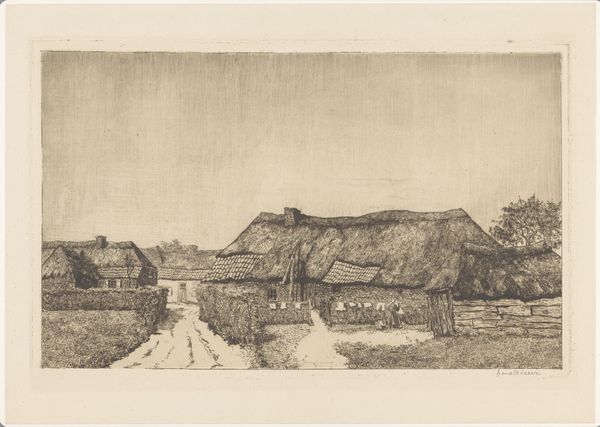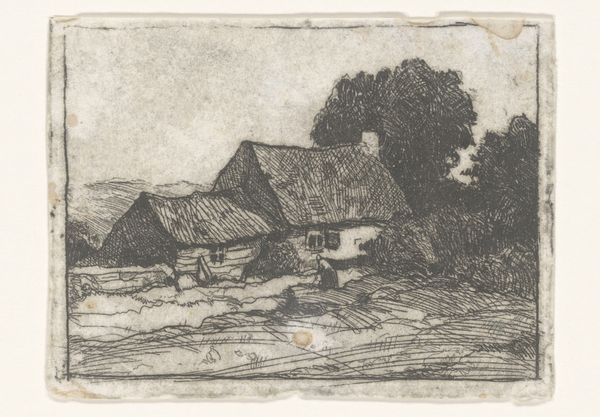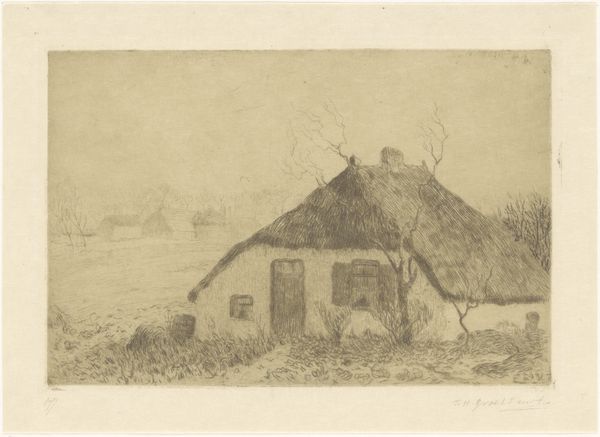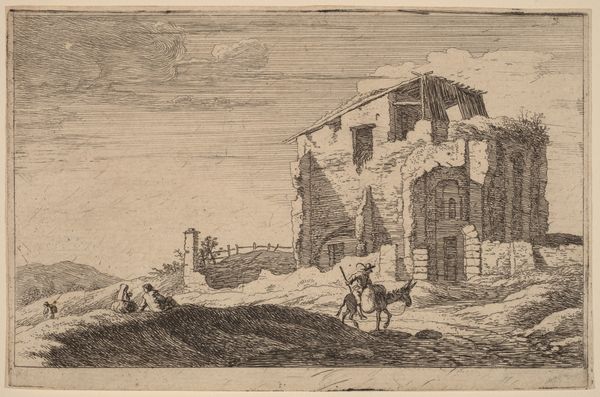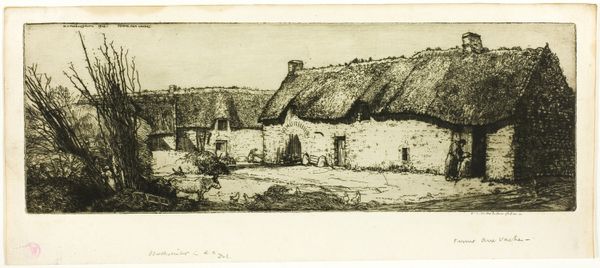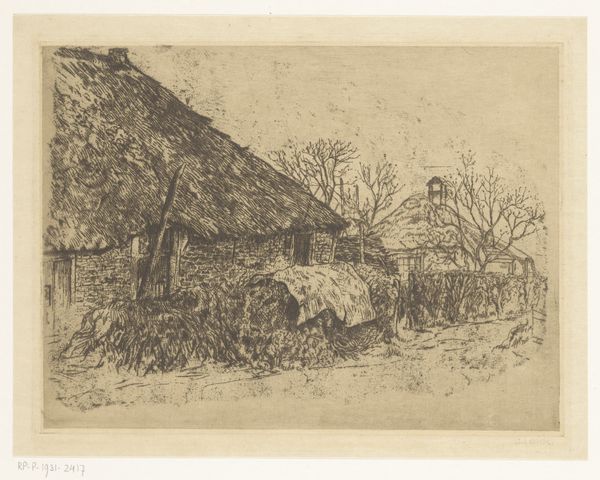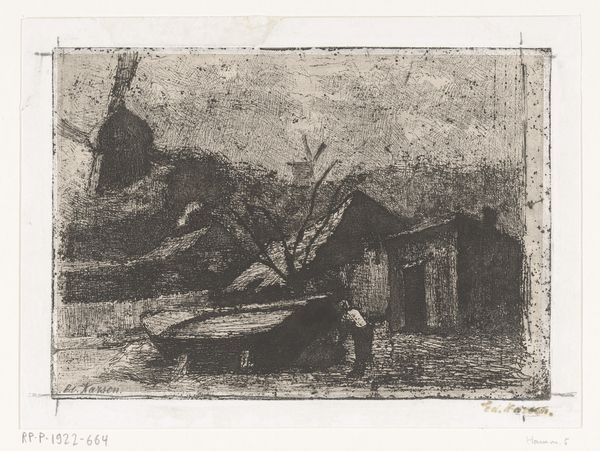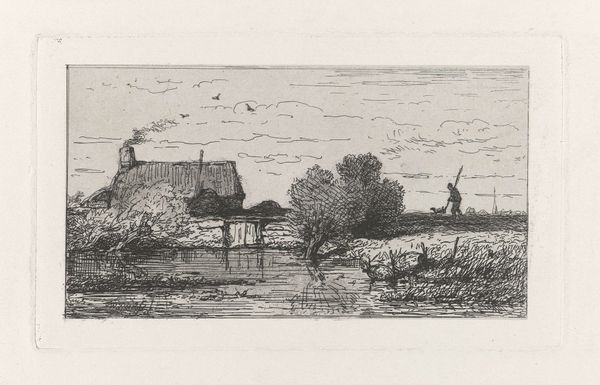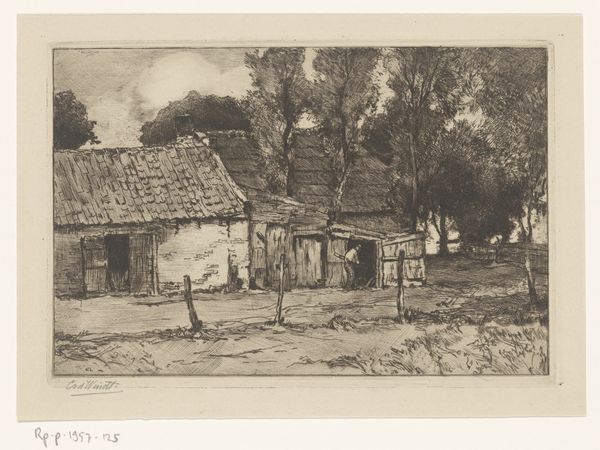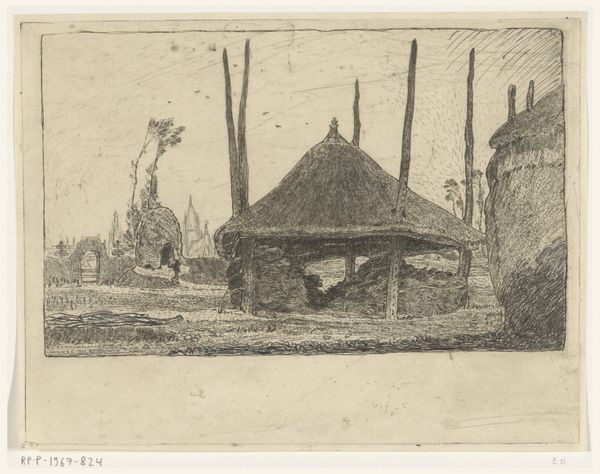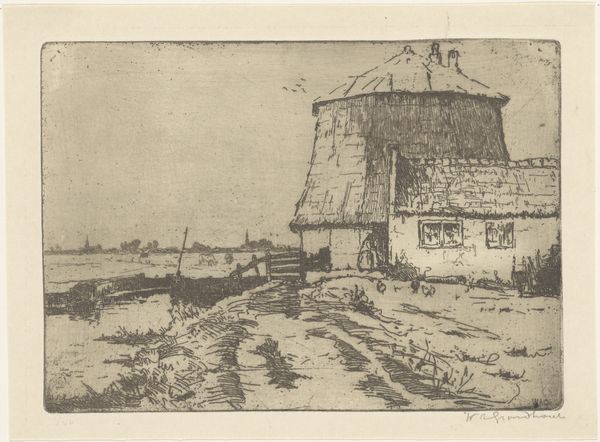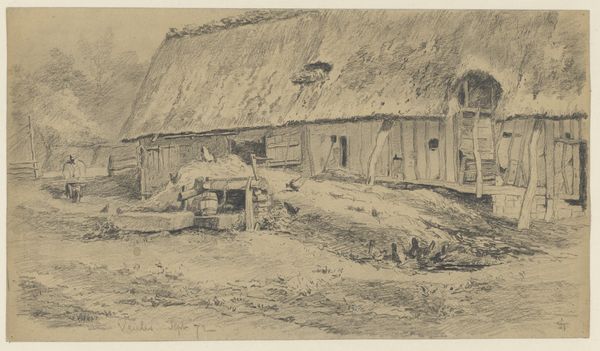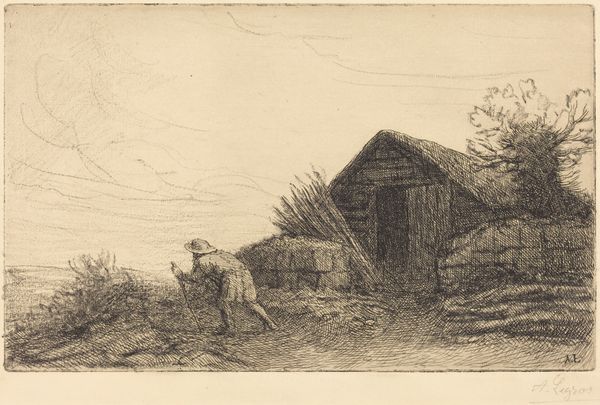
print, etching
#
16_19th-century
# print
#
etching
#
landscape
#
genre-painting
#
realism
Copyright: National Gallery of Art: CC0 1.0
Editor: This etching, "The Farm Yard," was created in 1895 by William Strang. It depicts a figure working in a rural setting. It is such a stark composition, I’m curious how you see it? Curator: Let us first observe the strategic placement of light and shadow. The artist's control of line weight directs our gaze across the plane. The clustered lines, aren’t they compelling as they define form, establishing depth and suggesting volume. Observe the buildings—they don't recede so much as establish depth through contrast. Editor: So, the buildings in the back, set atop what looks like a hill or a raised elevation, work in tandem with the structure nearest the viewer? Curator: Precisely. They interact within the picture plane. This print displays an acute awareness of structure, with tonal variation, using lines with great efficiency. Consider how he implies the form of the person within very economical marks. Note how he uses a series of parallel lines in the background, but not too close, in order to provide shading, setting up a stark contrast to the subject in the yard. Editor: Right. He really conveys a sense of depth through contrasting detail. It's clever how he builds the composition this way using varied density of line! Curator: It exemplifies a carefully constructed interplay between dark and light and their strategic alignment to compose the scene. The whole, therefore, becomes more than the sum of its parts, presenting not merely an image of a farm, but a dynamic interplay of formal relations. What do you think of that assessment? Editor: That’s a new way of seeing it for me. The emphasis on technique shows just how much thought went into its rendering. Curator: And that, in essence, defines the piece as more than just a scene of rural life.
Comments
No comments
Be the first to comment and join the conversation on the ultimate creative platform.
